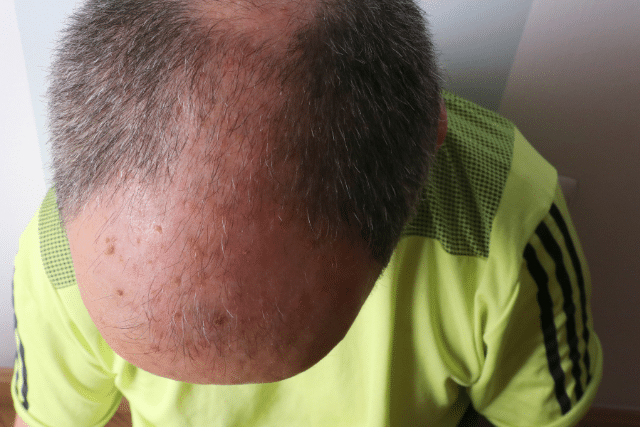
Facing a skin cancer diagnosis can be a terrifying prospect. Though it is one of the most common forms of cancer in the United States and has one of the highest survival rates when diagnosed and treated in the early stages, nearly 8,300 people still die of skin cancer each year.
Having access to reputable, trustworthy skin cancer experts like the dermatologists at Harris Dermatology is vital for ensuring your successful recovery. With a focus on diagnosing and treating all forms of skin cancer and precancerous conditions, Harris Dermatology is dedicated to saving lives and spreading awareness.
Part of our mission to help end skin cancer includes ensuring our patients are well-informed of their treatment options. From Mohs surgery for advanced stages of skin cancer to noninvasive treatments like photodynamic therapy for pre-cancerous actinic keratoses, our comprehensive care options ensure you’re in the right hands.
What Is Photodynamic Therapy?
Photodynamic therapy, also called PDT, combines targeted light energy and a photosensitive agent applied to the treatment area. This therapy is also designed to trigger the body’s immune system to attack pre-cancerous cells while leaving surrounding tissue unaffected.
PDT is primarily used as a noninvasive treatment for preventing pre-cancerous cells from developing into skin cancers. This early treatment is vitally life-saving, helping to prevent the necessity of more intensive cancer treatments and lasting side effects.
However, while some early stages of skin cancer may be treatable via PDT, most skin cancers like melanoma or those that are extremely deep are not ideally suited for this treatment. These cancers which are likely rooted in deeper layers of the skin are unable to be effectively treated with superficial phototherapy, thereby more likely to spread or reoccur if not properly excised through surgery.
How the Treatment Works
Before photodynamic treatment at Harris Dermatology, the doctor will clean the area and remove scales or crust from the top of the skin cancer area. They will then apply a liquid stimulant that promotes light sensitization to the pre-cancer cells and surrounding skin. This will sit for three to six hours before the treatment begins.
You get eye protection to wear during treatment to protect your eyes from the light. Then, your doctor will use light to treat the targeted area. This lasts for up to 25 minutes or so. In some cases, you might experience a bit of discomfort, but this is easily counteracted with local anesthesia or painkillers. After treatment is over, a scab will form, and a dressing will be put in place to cover the location, which will stay on for around 24 hours. The scab heals within three weeks.
Where to Find PDT for Skin Cancer in Naples, FL, or Fort Myers, FL
At Harris Dermatology, we proudly provide PDT as an early intervention for skin cancer care. To find out if you might benefit from this treatment, contact us at 239-936-3344 (Fort Myers) or 239-596-1848 (Naples) to schedule an appointment.

